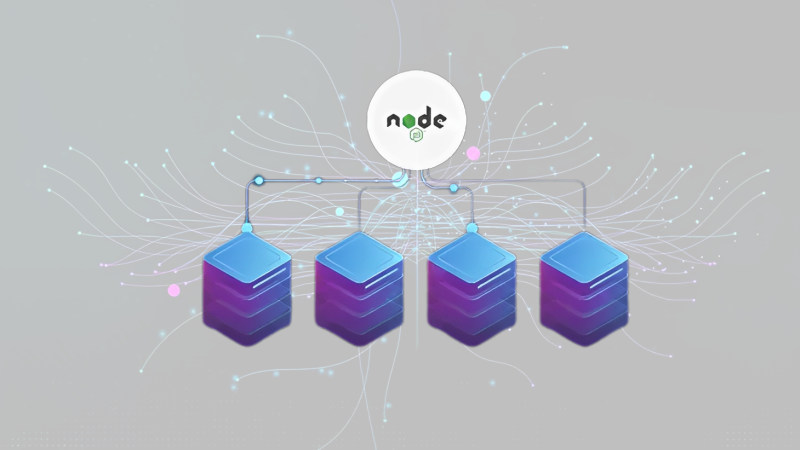INTRODUCTION
Node.js, the open-source, cross-platform runtime environment for building server-side software using JavaScript, has recently released version 21, with many new features, performance enhancements, and improvements. This release introduces new V8 engine improvements, expanded testing and experimentation opportunities for running tests, and experimental features designed for developers seeking to use the most advanced features internally where stability is not as critical. Let us consider these changes in depth and articulate how they affect Node.js development services in the sections below.
1. V8 Engine Upgrade to Version 11.8
Among the most notable changes in the new version of Node.js 21, it is possible to identify the updated V8 engine up to version 11. V8 is the JavaScript engine that Node.js uses and this release adds many new features that enhance both speed and developer friendliness and performance. If you’re looking to hire Node.js developers, this update makes it an excellent time to bring in skilled professionals who can leverage these new enhancements to build more efficient and scalable applications.
- New Language Features: By adding Array grouping and ArrayBuffer.prototype.transfer, the V8 upgrade helps to simplify array manipulation chores and minimise the need for other libraries.
- WebAssembly Improvements: WebAssembly development is now easier and more functional as the engine has added support for extended-const expressions.
These changes bring new-level memory management, shorter durations of execution, and improved language support that includes JavaScript and WebAssembly.
2. Stable WebStreams and Fetch Modules
Node.js 21 makes WebStreams and fetch modules as stable. This is quite an improvement particularly for web developers who are conversant with browser-side JavaScript as these allow for the use of formData, Headers, Request, Response and fetch API within the server side Node.js context.
These stabilisations for these APIs enhance the compatibility of front-end and back-end JavaScript making it possible for developers to easily develop full stack JavsScript applications.
3. Experimental WebSocket Client
A brand-new client is now supported in Node.js 21 by WebSocket, which may be accessed using the `–experimental-websocket` option. This feature makes Node.js more conforming to the way browsers work, which in turn simplifies the creation of real time applications as in chat applications or live notifications.
The fully integrated WebSocket client improves real-time communication by reducing the difficulty of developing long-lived links between a client and sever while adding significantly to Node.js’s capability for live data streaming.
4. New Test Runner Capabilities
Among the new features in Node.js 21, it is possible to name the improvement of the status of the test runner. To help these programmers, test patterns have now been extended so that tests can be specified using glob expressions. For instance, running tests in multiple directories can be achieved basing on a command like:
“`
node –test /.test.js
“`
This is a great enhancement for the developers working on vast test suites since it simplifies the way of executing tests without much configuring.
5. Module System Changes: Experimental Default-Type Flag
Another flexibility that has been introduced with new version is `–experimental-default-type` flag. This is a flag which enables one to set the default module type for the files of JavaScript, whether the CommonJS kind or ES Modules kind. For example, files without extension or those with no `package.json` file can now be parsed as ES module when using this flag
This change gives developers more ability to control what exactly interpreter is doing to their code and allows for strict compliance to new standards in JavaScript.
6. Performance Enhancements
Node.js 21 includes several performance improvements across core modules, contributing to faster and more efficient operations:
- Streams Optimization: The Readable and Writable streams as been made to perform better in that unnecessary checks have been done away with and how callbacks are handled has also been enhanced. This results in cost cutting and optimal utilisation of memory when processing data streams
- Improved HTTP Handling: Before, chunked HTTP responses had certain problems that led to addition of unnecessary burden. However, in order to execute write requests, Node.js had a problem with chunked responses that is now solved by grouping several chunk write operations.
- File System Enhancements: A new feature `flush` is added to fs.writeFile so that it can (in some cases) force data to the disc so stale reads are not possible.
7. llhttp 9.1.2 Strict Mode
Node.js 21 also introduces strict mode by default for was llhttp – the HTTP parser of Node.js. Strict mode enhances compliance with protocols in processing data by extracting additional format in headers and chunks. Hence, they can disable strict mode by compiling the developers’ tool with the `–insecure-http-parser flag if required.
8. Global Navigator Object
Another new feature introduced in Node.js 21 is the inclusions of the global navigator object. This feature moves Node.js one step closer to web compatibility as developers will be able to access hardwareConcurrency, a property that is actually the number of logical processors in the system. This is particularly useful for scheduling the workloads in the multi-threaded environment In particular, this is particularly useful for workloads in multi-threaded systems.
9. Long-Term Support and Transition
For the record, Node.js 21 is an odd-numbered release and is not going to get LTS that is Long Term Support in the future. Companies utilising Node.js in production remain advised to continue running LTS versions such as Node.js 18 or 20. Node.js 21 is perfect for establishing application readiness for the next LTS and for beta testing new features.
Conclusion
Node.js 21 has many enviable enhancements, additions, and experimental improvements that make it an attractive upgrade for the creators, and for those who want to try advanced tools. The new version V8 11.8 is packed with improved performance, and with the stabilisation of WebStreams and some fetch modules, Node.js sets itself nearer to the modern web standards. These features are the improved test runner, the WebSocket client, as well as new features related to modules.
Though with Node.js 21 currently is not an LTS release, developers contributing to the production systems have to decide whether to switch to Node.js 21 or continue using Node.js 18 or 20 until a stable release containing these features are integrated. If you wish to try out Node.js 21 and get a research on the latest developments, now is as good a time as any to study further on the latest, greatest Node.js frameworks that are coming your way.
FAQ
1. What are the key updates in Node.js 21?
Node.js 21 brings stable WebStreams and fetch modules, an experimental WebSocket client, V8 engine upgrades to version 11.8, and test runner modifications to improve test performance.
2. Why is Node.js 21’s V8 engine update so important?
New language capabilities include Array grouping and WebAssembly enhancements in the V8 version 11.8 help to increase efficiency and lower the requirement for outside libraries.
3. What is the experimental WebSocket client in Node.js 21?
Node.js 21 adds an experimental WebSocket client compliant with browser standards, therefore facilitating flawless real-time communication between client and server.
4. How has test running been improved in Node.js 21?
Now supporting glob expressions, the test runner lets developers run tests across several folders more quickly with one command.
5. Is Node.js 21 an LTS release?
Node.js 21 is not an LTS release, neither. It is meant for testing fresh features; versions like Node.js 18 and 20 offer long-term support.



